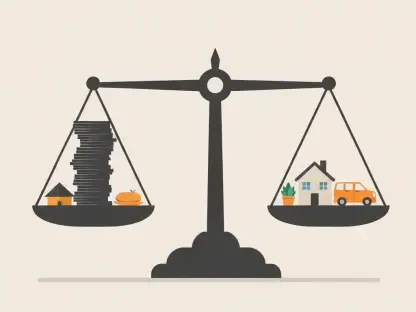Listen to the Article
The landscape of financial fraud has transformed significantly over the last five years, with more dramatic changes than the preceding three decades combined. As the world becomes increasingly digital, interconnected, and instant, monetary crimes evolve into sophisticated, global enterprises. Banks are under pressure, having to defend against highly coordinated criminal syndicates armored with advanced technologies. Read on to learn how to stay ahead of these rapidly evolving threats and protect both businesses and customers.
The Changing Face of Financial Crime
Historically, theft was a relatively straightforward affair. A few key actors—counterfeit card makers, middlemen, and mules—operated independently, often with well-defined roles. A notorious example of this was the 2009 Heartland Payment Systems breach, which compromised over 100 million cards and impacted 650 establishments providing financial services, all orchestrated by a small group of individuals.
But fraud has become a very real, very present, and highly dynamic threat. Today’s criminals operate within sophisticated networks, and sometimes even seamlessly (read: shamelessly) collaborate to execute complex schemes. Their methods have grown increasingly intricate, and now they treat the booming AI sector as their playground. And all the free-range dark web resources at their disposal further enable them to orchestrate more convincing attacks. When experts say this is a significant challenge to traditional defenses, it is an understatement.
Shady tools like WormGPT and FraudGPT have made it easier for criminals to craft phishing emails, generate malicious code, and even create realistic deepfake images or videos—all problematic products, considering they aim to mimic human interactions. Plus, they can deceive even the most skeptical users. Traditional security systems cannot keep up. As a result, these increasingly sophisticated threats have moved to the top of the agenda for financial institutions worldwide.
Fraud Shifting from Card Payments to Account-to-Account (A2A) Transactions
Fraudsters are shifting their mouse cursor more toward Account-to-Account (A2A) transactions. Cyberpirates commonly target card payments, but as more consumers and businesses adopt real-time payment plans, scammers are flocking to the same rails. Research from Juniper shows that the sector will grow from 60 billion transactions in 2024 to 186 billion by 2029—a staggering increase of 209%. And cyberpirates tend to focus on payment methods that people use most often.
Banks must build better defenses ahead of time because they will need fast intrusion detection when the payment landscape shifts. Here is a real-life example of how using existing system assets and merging payment data from both A2A and card networks enables better detection of suspicious user transactions:
Visa and Pay.UK partnered to test how AI predictions improve monitoring success. The service detected 54% more deception by using money transfer patterns and predictive modeling techniques that outperformed standard bank safety systems. When introduced across all UK regions, the system would save the economy £330 million a year. Our insight better shows why multiple data streams should be combined for better fraud protection programs.
The Role of Collaboration in Fraud Prevention
Individual institutions working in isolation cannot eradicate problems. Collaboration is paramount. As misconduct becomes more sophisticated and organized, financial institutions must share insights and data to stay ahead of criminals.
Visa’s approach was to combat digital theft by joining data from banks with card networks to identify current patterns and apply advanced defenses. Through their cooperative Visa Protect for A2A service, they can now discover troubles earlier and stop more money from being lost.
A U.S. bank increased its ability to find high-risk events by 1700% by combining email risk evaluation with digital identity checks. Using data from different sources, the American card issuer achieved a 23-fold improvement in fraud detection results. LexisNexis research reveals that devices exhibiting troubling operations pose five times higher deception potential, which jumps to eight times higher when merging known devices with suspicious email addresses.
Working with other companies facilitates better data outlines for device use, email patterns, and network locations, helping discover a hoax before it impacts the customer experience.
The Dark Web and AI: The New Frontier of Financial Fraud
Criminal organizations can access advanced technologies like any other user or business owner. And they have tapped into them heavily to expand and make their fraudulent schemes easier to operate. One example is DarkBERT, a specialized AI model trained to understand illicit dark web content’s unique vocabulary and structure. It facilitates highly effective and deceptive attacks, such as phishing campaigns that often contain polymorphic malware, which can evade detection by traditional security systems.
Now, even reputable banks must be proactive and monitor dark web activity. How dystopian, isn’t it? Experts advise that banks adopt tools to detect and mitigate threats before they can touch the consumer. A solid preventive strategy would require a combination of AI-driven insights, data sharing, and proactive defense mechanisms to stay ahead of increasingly tech-savvy fraudsters.
Blockchain Technology’s Role in Fraud Prevention
With its decentralized, immutable, and transparent nature, blockchain stands strong against modern, sophisticated financial scams.
- Immutability and Transparency: Transactions recorded in the blockchain network are permanent, and users can track them without any possibility of being changed. The system ensures we have a trusted record of transactions that lets us spot strange behavior promptly.
- Decentralized Security: The system is different from a regular centralized infrastructure because its data exists across multiple nodes. When multiple points must be compromised to alter data, this is usually a strong enough defense to deter thieves from tampering with the system.
- Smart Contracts: Blockchain smart contracts can instantly recognize conniving behavior by setting up alert systems. These electronic settings can identify fraudulent activity automatically during live exchanges, which eases the dependence on human supervision.
- Data Privacy: A digital ledger safely provides network participants access to their information, but only those authorized. Having limited access to the system provides an excellent new defense system.
- Real-Time Monitoring: Blockchain delivers instant access to transaction details and strong detection grids to let organizations fight fraud as it happens. Users can see through the system to check the accuracy of entries, and independent auditors find it easy to verify data.
The advanced features in blockchain technology offer strong protection against scams by tracing and stopping them in their tracks. Developers in banking simply need to build a better platform, so people can feel confident about their financial transactions. As blockchain adoption rises throughout the industry, its security features will also continue to improve.
Conclusion
As banking cons ripen, so must the plans to combat it. To spot future risks effectively, companies must adopt advanced tech, including AI machine learning, blockchain, and dark web analysis tools that allow for smoother information sharing between business partners. A solid defense against advanced fraud depends on accurate predictions from artificial intelligence, real-time information sharing, and consistent monitoring support.
The growing use of same-minute money transfers and fake IDs shows that enterprises must develop future-ready solutions. Embracing blockchain technology can even strengthen their security because such transaction records are unchangeable, and the system defends against hackers and monitors every transaction in real-time.
Furthermore, operations silos in the payments industry require parties to join forces. Successful protection relies on working together toward new solutions that include blockchain technology and agent-to-agent trading models. Through united efforts, financial institutions protect their businesses and client data from future security threats.









